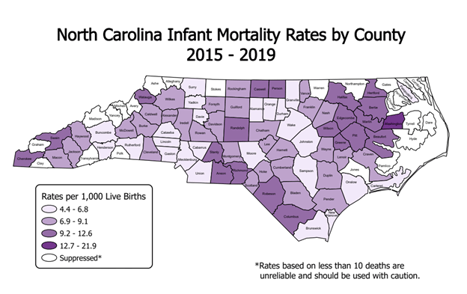In the United States, tobacco use continues to be a leading cause of preventable disease, disability and death. Healthcare providers can play an important role in reducing rates of tobacco use by offering tobacco cessation counseling.
This course is designed to provide tools and resources to enhance the skills of healthcare providers when supporting individuals on their journey to living a tobacco-free life. This activity also offers the opportunity to practice tobacco cessation counseling through four interactive case studies.
Objectives
.png?width=300&name=CounselingforChangeHeader%20(1).png)
Upon completion of this program, participants will be able to:
- Identify tobacco-related health disparities.
- Apply skills and resources to encourage behavior change when counseling individuals to be tobacco-free.
- Describe how the stages of change can be utilized in tobacco cessation counseling.
- Practice using the 5A's through interactive case studies.
Find out more about this online self-paced learning opportunity on our website and get registered for only $30!
History of The Counseling for Change Course at Northwest AHEC
For over 15 years Northwest Area Health Education Center (Northwest AHEC) has been providing an online course called “Counseling for Change: An Online Tobacco Cessation Course”. This course is designed to provide tools to enhance the skills of healthcare providers when counseling for tobacco use including smoking cessation, exposure to secondhand smoke (SHS), the use of smokeless tobacco and electronic cigarettes.
While the stages of change, the 5As and the 4Rs have not changed, the Counseling for Change course has gone through several iterations over the 16 years of its existence. This is one of the longest running online courses offered by Northwest AHEC, Counseling for Change has evolved from a basic website to Moodle learning platform lessons, to its current interactive form in Articulate RISE Web App and Storyline e-Learning platform. The modules and content now incorporate the innovations in nicotine delivery and hence more nicotine addiction. Through case scenarios and interactive lessons, participants learn about change talk and other strategies to help clients from pre-contemplative stages to active quitting.
Tobacco is one of the leading causes of preventable disease and premature mortality in the U.S. today. Healthcare providers can have a tremendous impact on reducing the rates of tobacco use and preventing unnecessary disease and death through tobacco cessation counseling offered to patients.
The course targets physicians, nurses, behavioral, public, and allied health professionals and offers continuing education credits.
1,294 health professionals have completed the online course since its inception in 2004. Participants represent a wide range of disciplines in North Carolina as well as 26 other states.
In 1998, Forsyth County in North Carolina had an exceedingly high infant mortality rate of 12.5 per 1,000 live births. This rate exceeded the statewide rate of 10.2 and was the highest of the five metropolitan counties in North Carolina. With the help of a grant from The Duke Endowment, an initiative was launched by Northwest AHEC. The overarching goal was to improve the smoking cessation services offered to women of childbearing age in order to reduce their risk of having a low birth weight or premature infant. In partnership with many agencies, a variety of approaches - including didactic education for health care providers and referrals to a local tobacco counseling telephone service - was implemented in an effort to help women stop smoking.
Originally this project was called Women’s Health: Interventions for Smoking Cessation (WHISC) which ran from 1999 through 2002 when the project was developed into the online course "Counseling for Change: Quit Smoking". Initial cost to develop the program was $366,419, of which, $355,049 was funding through the Duke Endowment while the remaining was cost-shared by other NWAHEC funds.
- Increase smoking cessation knowledge and skills of health and human service staff who serve women of childbearing age. Strategies include continuing education programs, self-directed learning, and support for smoking cessation in the didactic and clinical components of the medical school curriculum.
- Facilitate the implementation of a comprehensive approach to smoking cessation services for women of childbearing age receiving health care in Forsyth County. Strategies include developing a protocol for smoking cessation assessment, counseling, and education; developing multiple strategies and resources to provide interventions to women at risk; providing technical assistance and consultation to private practices in establishing office systems, and advocating for third party reimbursement of smoking cessation interventions.
The WHISC project, reached the end of its three year funding in August, 2002. WHISC had resulted in significant improvements in smoking cessation services for women of childbearing age in Forsyth County, NC. These improvements translated into a decrease in smoking behaviors among pregnant women, thereby reducing the incidence of a major risk factor for low birth weight births and prematurity, two major causes of infant morbidity and mortality.
As a result of the initial grant, the course was expanded from the targeted focus on infant mortality to addressing global issues related to tobacco use. Physician advice and encouragement have been shown to increase the number of patients who will attempt and succeed in quitting smoking.
- Four out of every nine adult cigarette smokers who saw a health professional during the past year did not receive advice to quit.*
- Less than one-third of adult cigarette smokers use cessation counseling or medications approved for cessation by the Food and Drug Administration when trying to quit smoking.*
- More than three out of five adults who have ever smoked cigarettes have quit.*
*Source Smoking Cessation: Fast Facts
Northwest AHEC appreciates the Duke Endowment for its support and continues to acknowledge the initial efforts as we continue to leverage your investment with our other resources to enhance and sustain this project.






